Last updated on
Dive into the world of modular coastal home designs because they pair innovative architecture with sustainability, promising a luxurious yet eco-friendly lifestyle by the sea.
Key takeaways:
- Elevated foundations protect against floods and reduce insurance premiums.
- Weather-resistant materials like stainless steel and aluminum ensure durability.
- Impact-resistant windows and doors provide protection during severe weather.
- Strategic design choices divert rainwater and minimize water damage.
- Modular construction enhances weather resistance and precision in building.
Coastal Resilience in Modular Home Design
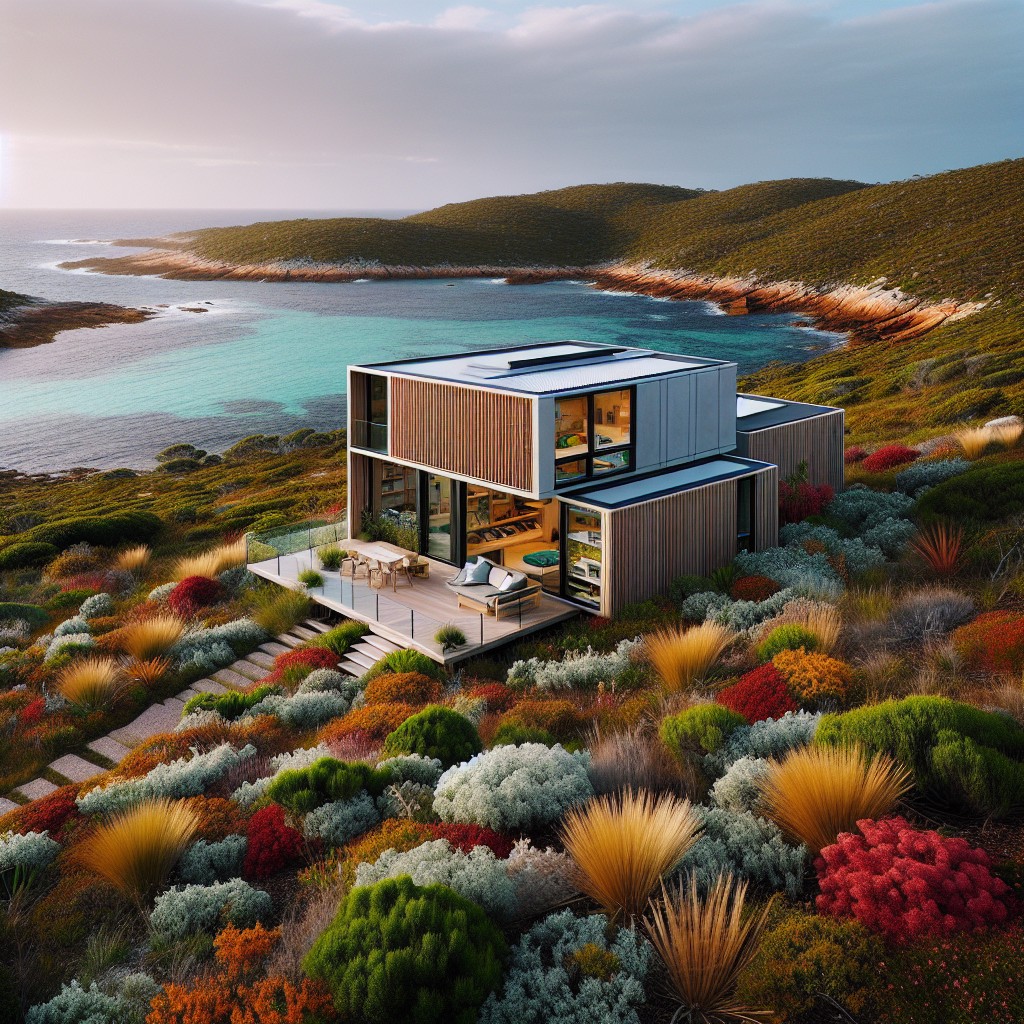
Building in coastal areas requires an astute focus on resilience to withstand the unique challenges these environments present. Modular home designs can be tailored to embrace strength and durability against powerful winds, storms, and flooding. Here’s how:
- Elevated foundations are a non-negotiable; lifting living spaces above potential flood levels not only protects the property but may also reduce insurance premiums.
Weather-resistant materials such as stainless steel and marine-grade aluminum prevent corrosion from salty air, ensuring the structure retains its integrity over time.
Impact-resistant windows and doors safeguard against debris carried by high winds, providing peace of mind during severe weather events.
Strategic design choices, including pitched roofs and overhangs, can divert rainwater effectively, reducing the risk of water damage.
Modular construction allows for precision in the factory setting, reducing the margin of error in the building envelope and enhancing the overall weather resistance of the home.
Integration of renewable energy sources like solar panels can sustain a home off-grid during power outages, a common occurrence in coastal storms.
Through these points, modular home designs stand out as a proactive solution for creating resilient, long-lasting homes on the coast.
Considerations for Choosing Coastal Home Materials
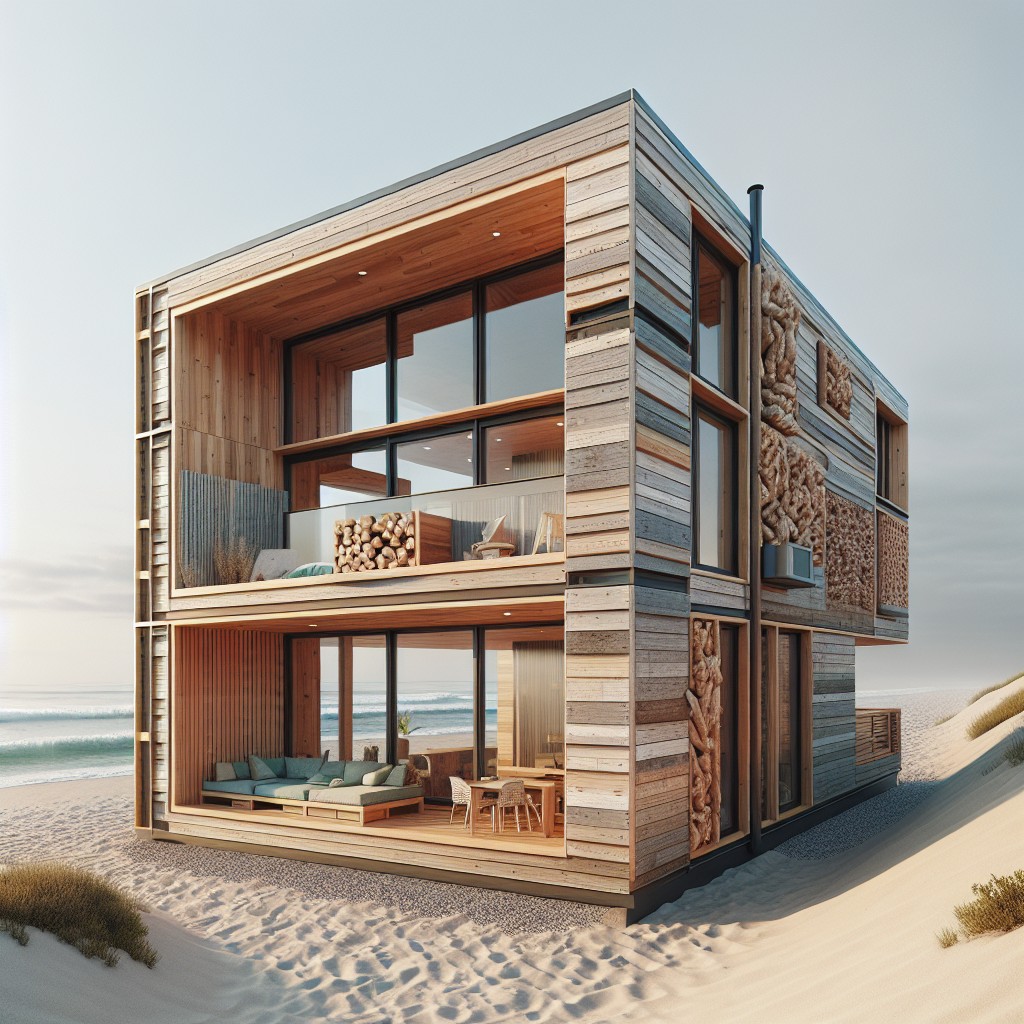
Selecting the right materials for your modular coastal home can significantly influence its durability and sustainability. Here are key points to consider:
1. Corrosion Resistance: Coastal environments can be harsh, with salty air and high humidity. Opt for materials like stainless steel, galvanized or treated metals for hardware and fasteners to resist rust.
2. Weatherproofing: Look for exterior materials designed to withstand strong winds, driving rain, and sun exposure. Choices such as fiber-cement siding, high-impact windows, and water-resistant roof shingles will offer longevity.
3. Insulation: Proper insulation is vital to protect against heat and cold while reducing energy consumption. Closed-cell spray foam insulation can also act as a moisture barrier, preventing mold growth in humid coastal climates.
4. Sustainability: Materials that are locally sourced, have low volatile organic compound (VOC) emissions, and are renewable contribute to a smaller environmental footprint and healthier indoor air quality.
5. Foundation and Framing: Coastal homes often require sturdier foundations due to potential flooding. Pressure-treated lumber or concrete pilings raise the structure above the surge line, while robust framing can provide additional stability against storm-force winds.
6. Decking and Outdoor Spaces: Use composite materials or pressure-treated, rot-resistant wood species suitable for decks and outdoor living areas to ensure they endure the coastal elements.
7. Interior Finishes: Choose high-quality sealants and mold-resistant paint for interior surfaces. Tile or luxury vinyl flooring can offer a moisture-resistant, low-maintenance solution over traditional hardwoods.
By prioritizing these considerations, you can ensure the material choices for your modular home effectively balance performance with the environmental demands of coastal living.
Modular Home Elevation for Flood Prevention
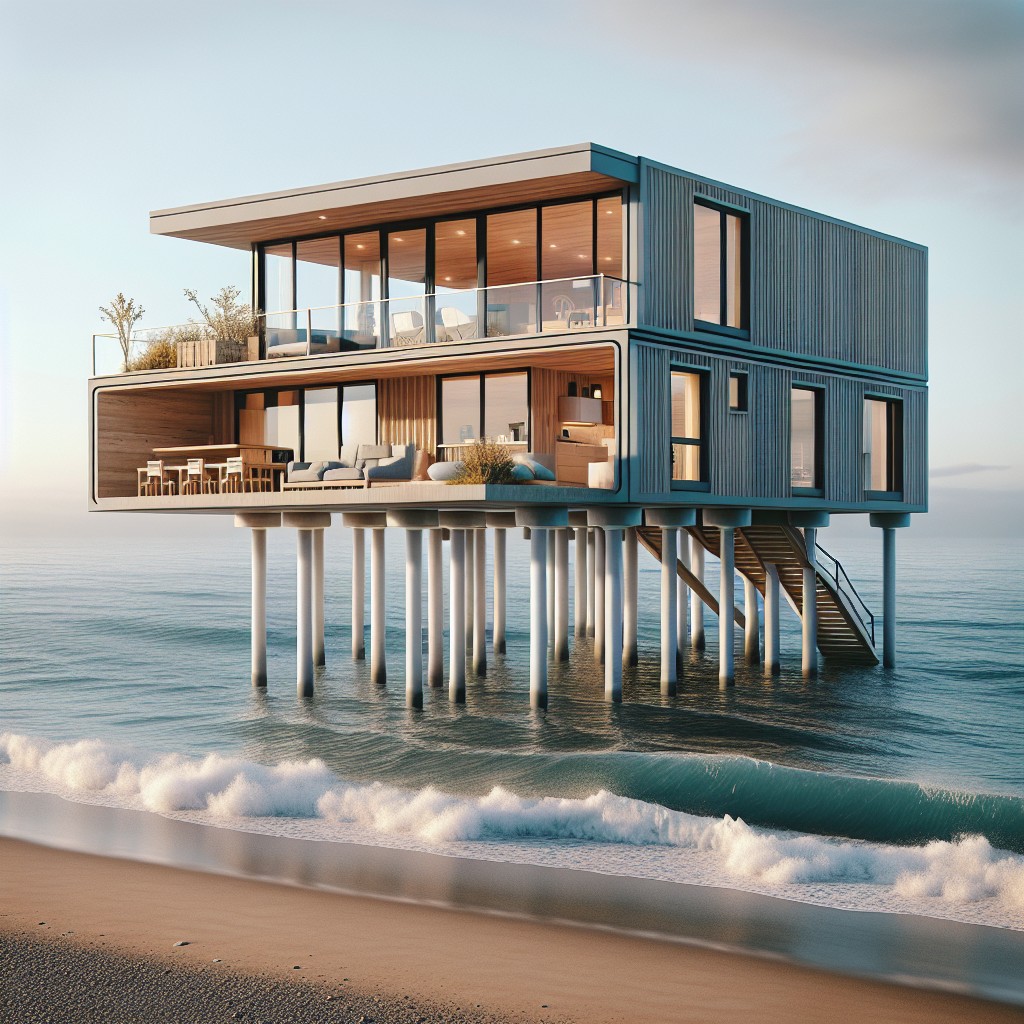
Raising the structure above ground level is a key strategy in mitigating flood risks, particularly in coastal areas where tides and storm surges are prevalent. Elevation can be achieved through various means such as piers, stilts, or raised foundations. This not only reduces the risk of water damage but may also lower insurance premiums in flood-prone zones.
When choosing the elevation height, reference local flood maps and historical data for guidance. It’s often wise to exceed minimum recommendations to account for possible changes in weather patterns and sea levels. Also, consider the accessibility of the elevated home, incorporating ramps or lifts if necessary to ensure that it remains functional for all residents.
Utilizing a modular design can expedite the elevation process. Prefabricated modules can be easily assembled atop an elevated foundation, significantly reducing on-site construction time. This approach ensures the home is sealed away from potential water intrusion, providing peace of mind and a safer living environment.
Remember, the goal is to find a balance between functional elevation for flood prevention and maintaining the aesthetic charm and accessibility of a coastal home.
Incorporating Local Building Codes and Coastal Regulations
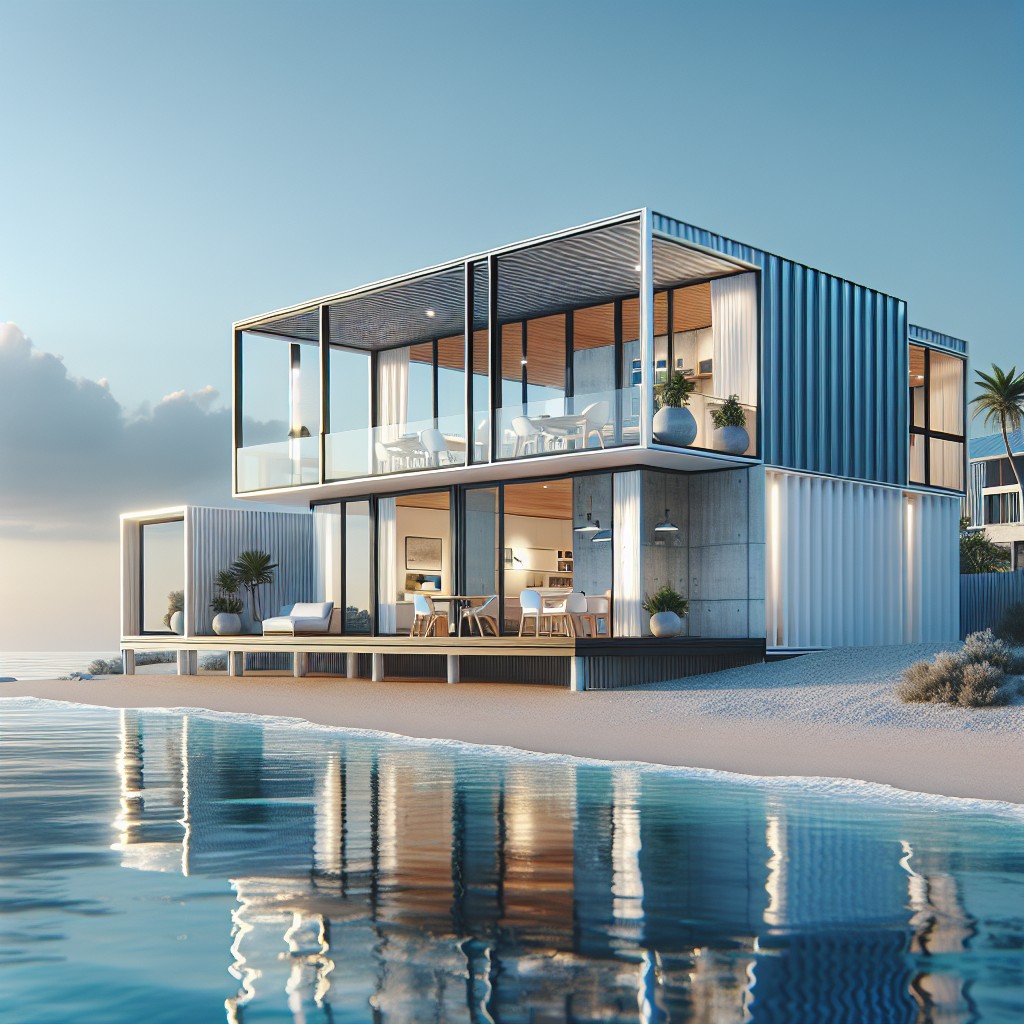
Understanding local building codes and coastal regulations is paramount in designing a modular home that is both safe and compliant. These regulations are put in place to ensure structures can withstand the unique environmental challenges of coastal areas, such as high winds, flooding, and saltwater corrosion.
- Begin with a thorough review of zoning laws to determine restrictions on building size, height, and placement on your property.
- Consult FEMA’s flood zone maps to understand potential flood risks and the need for elevated construction.
- Incorporate design elements that meet or exceed the standards set by the International Building Code (IBC) for wind and seismic loads.
- Use materials and construction methods that resist moisture and salt corrosion, which are common in coastal environments.
- Engage with a local architect or builder experienced in coastal construction to navigate regulation complexities and streamline the approval process.
- Ensure the design includes allowance for storm surge barriers or breakaway walls if required by local codes.
- Be mindful of the coastal environment by following guidelines that protect dune systems and local wildlife habitats.
- Consider local ordinances regarding aesthetic and historical character, which may influence color choices, architectural styles, and material use.
By prioritizing compliance with local codes and regulations, modular coastal homes can offer a resilient, sustainable living environment, harmonious with their natural surroundings.
Energy Efficiency in Coastal Homes
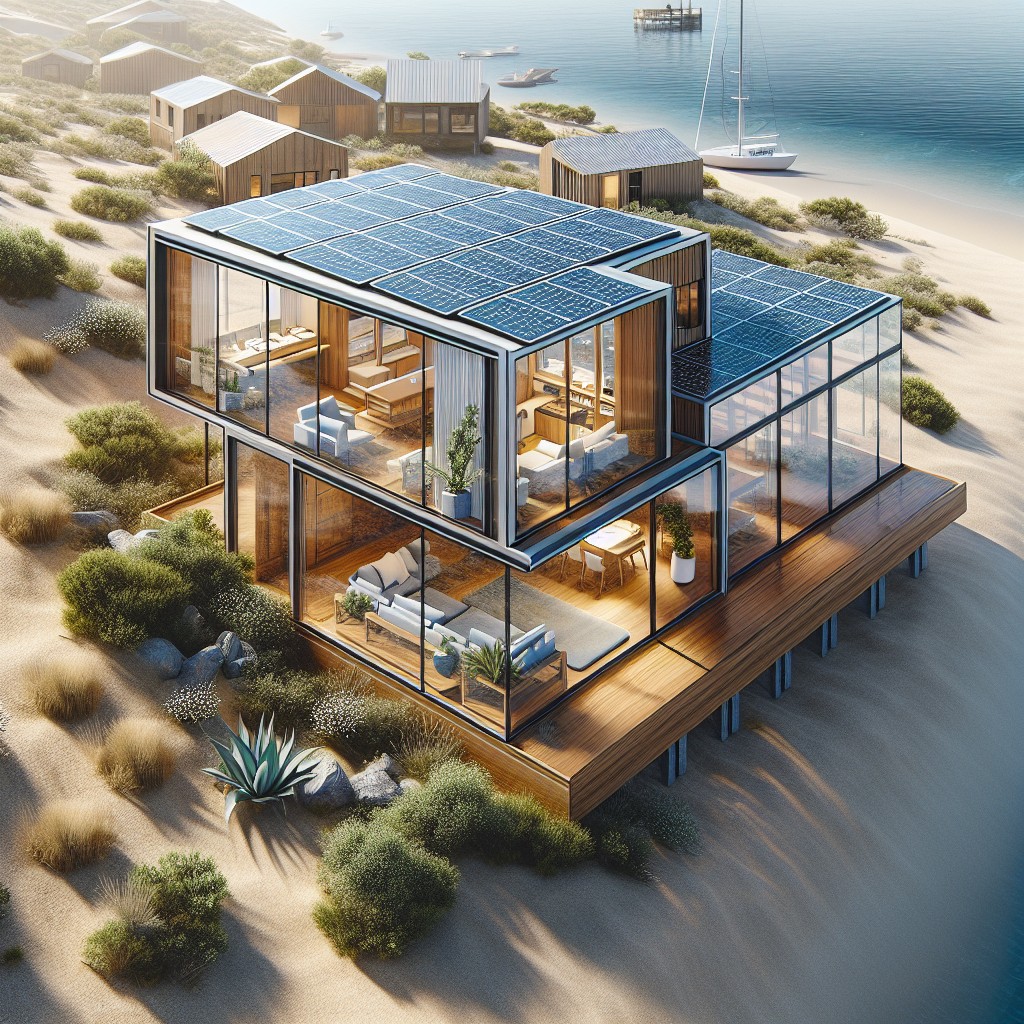
Maximizing natural sunlight with well-positioned windows allows coastal homeowners to reduce reliance on artificial lighting and lower energy consumption. Insulated double or triple-glazed windows help maintain indoor temperatures, resisting heat gain during warm months and heat loss during cooler ones. Additionally, reflective roofing materials can repel sunlight and minimize heat absorption.
The installation of Energy Star-rated appliances and LED lighting further hastens energy savings. Smart home systems afford residents precision control over heating, cooling, and electricity use, optimizing energy efficiency even when away from home. For renewable energy sources, consider integrating solar panels tailored for salty air and strong winds, which are common challenges in coastal environments.
Implementing advanced framing techniques also enhances insulation effectiveness and reduces thermal bridging, a common issue where continuous materials create a path for heat flow. Finally, energy recovery ventilation systems ensure a fresh supply of filtered air while conserving energy by reducing the need for heating and cooling to maintain a comfortable indoor environment.
Sustainable Features for Coastal Living
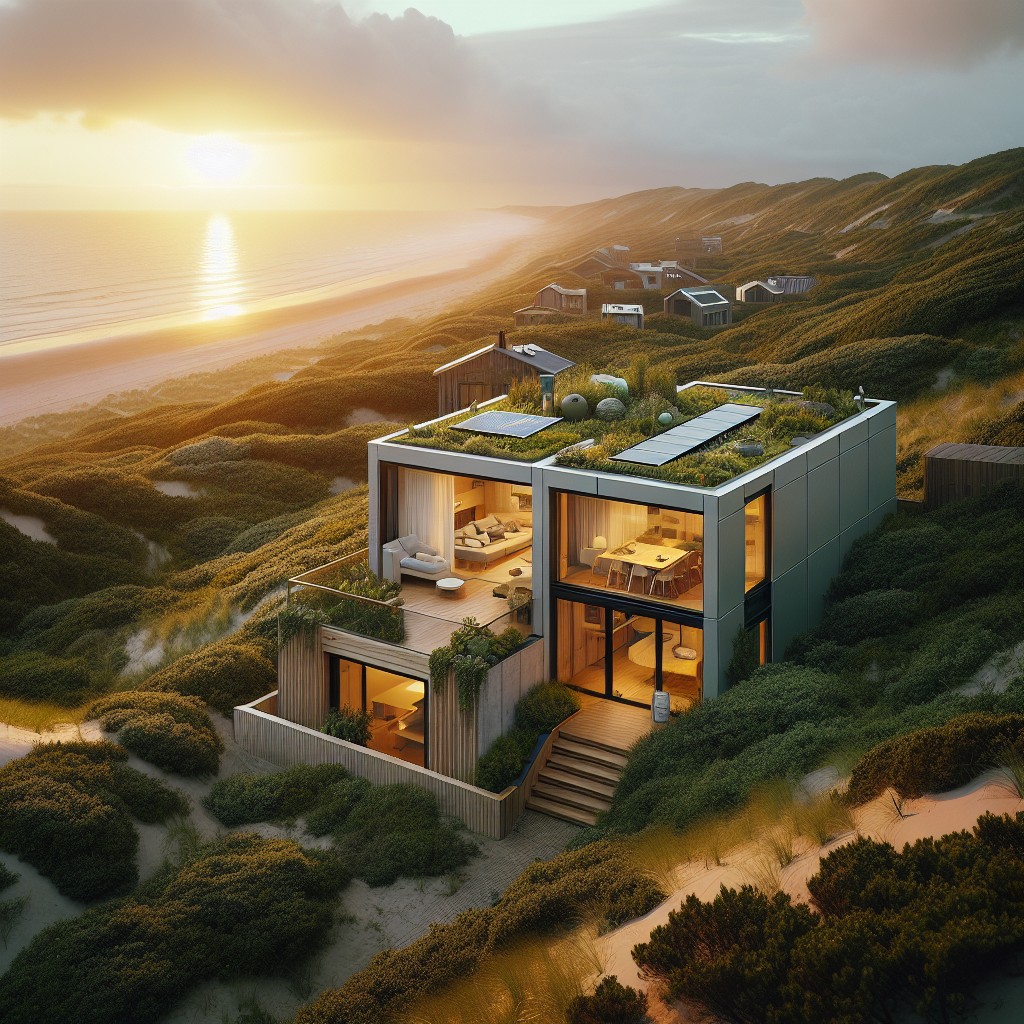
Maximizing natural light and passive solar heating can drastically reduce energy consumption in coastal homes. Strategically placed windows and skylights not only invite warmth but enhance ventilation and reduce the need for artificial lighting. Solar panels are a worthwhile investment, harnessing the abundant sunlight in coastal areas to generate renewable energy.
Rainwater harvesting systems collect and repurpose water for non-potable uses, greatly conserving fresh water resources. Landscaping with native plants not only anchors the soil against coastal erosion but also supports local ecosystems and requires less maintenance and water.
High-efficiency appliances and fixtures, such as Energy Star-rated washing machines or low-flow toilets, further minimize the environmental impact. Insulation and weatherproofing are essential to maintaining indoor temperatures without excessive heating or cooling, thus conserving energy.
Sustainable building materials also play a vital role. Reclaimed wood, bamboo, and recycled metal or glass can give a coastal home character while reducing its carbon footprint. Eco-friendly paints and finishes, free of volatile organic compounds (VOCs), ensure better indoor air quality.
By implementing these features, coastal homes can not only coexist with their unique environment but actively contribute to its preservation.
Salt-Resistant Exteriors and Rust-Proof Fixtures
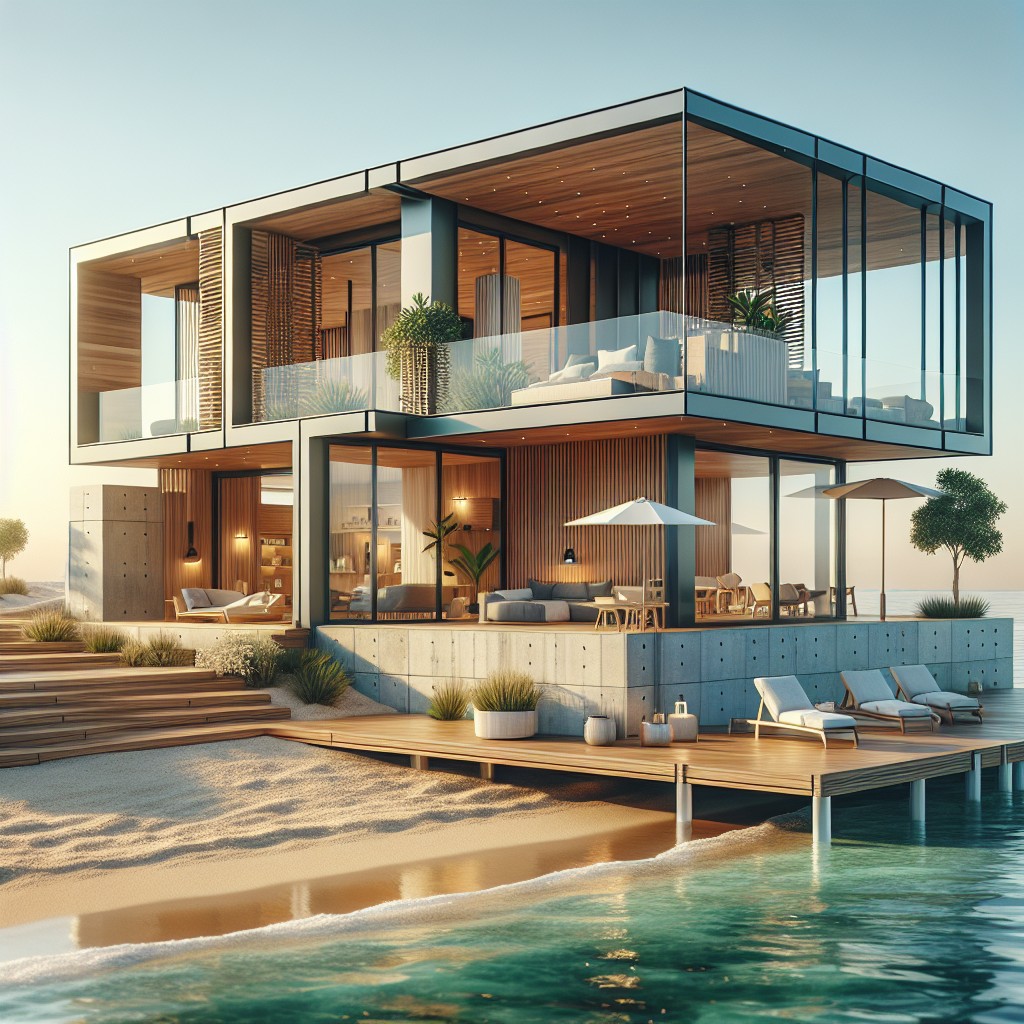
Living close to the ocean, structures face a relentless assault from salty air, which can corrode materials quickly. To safeguard the longevity of a modular coastal home:
- Choose exterior cladding materials that withstand salt spray, such as fiber cement siding, brick, or stucco, avoiding wood that can deteriorate more quickly.
- Install windows with aluminum or vinyl frames treated for corrosion resistance to prevent the damaging effects of salt-laden air.
- Opt for stainless steel, galvanized, or specially coated fasteners and fixtures for resistance to rust, ensuring that all outdoor hardware can stand up to the marine environment.
- Select outdoor lighting fixtures made of marine-grade materials designed to prevent corrosion; copper and brass are excellent choices for their natural resistance to saltwater.
- Consider composite or treated decking materials that resist rot, mildew, and salt, maintaining their appearance and structural integrity over time.
- Utilize outdoor furniture and accessories crafted from materials rated for coastal conditions to avoid the need for frequent replacements.
By incorporating these elements, coastal modular homes not only increase their durability against harsh marine climates but also minimize maintenance requirements, ensuring that the seaside charm remains pristine for years to come.
Adaptable Designs for Changing Coastal Landscapes
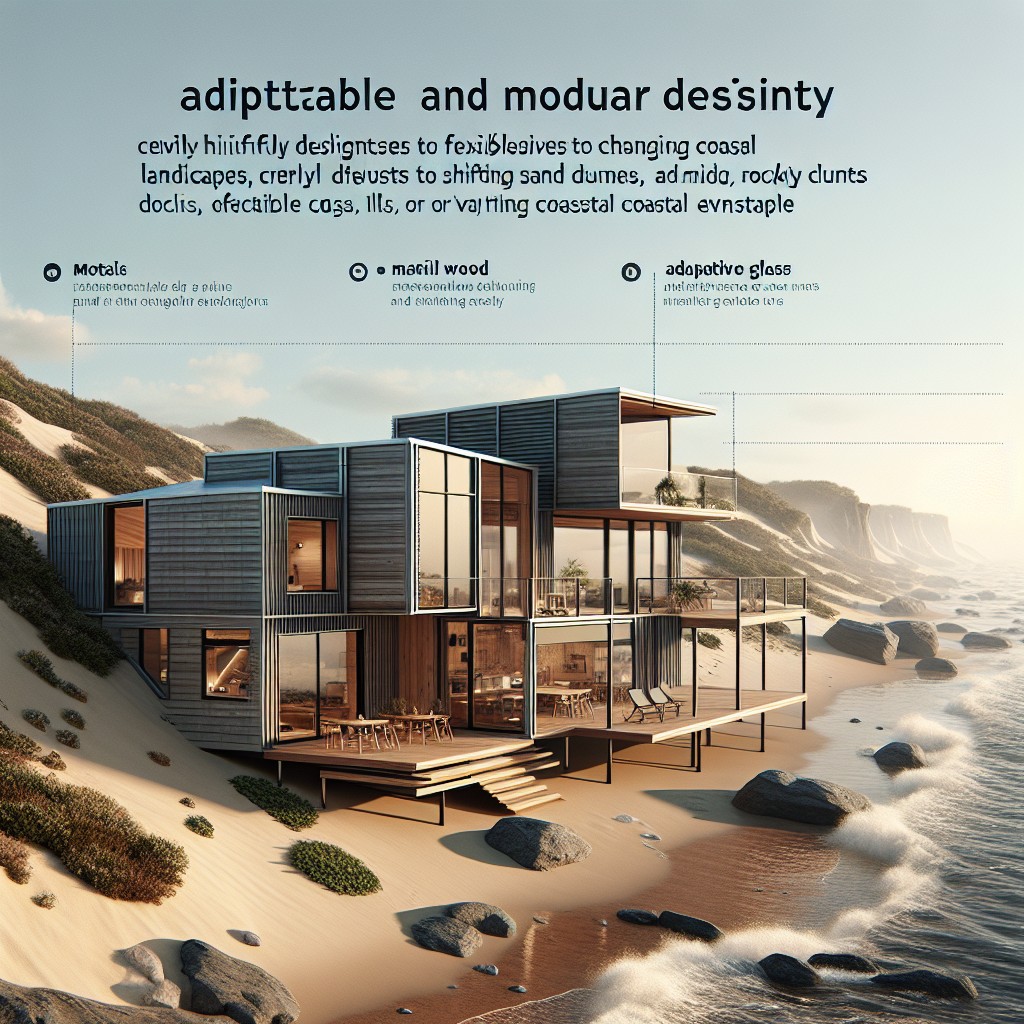
Coastal landscapes are dynamic, evolving with the forces of nature. Modular homes in these regions benefit from adaptable designs that accommodate shifting sands, erosion, and the potential for increased storm frequency. Here are key points to consider:
- Flexibility in Foundation Systems: Look for designs that allow for easy adjustments to foundations. Systems like helical piles can be used to stabilize structures in sandy or unstable soils.
- Adjustable Structural Elements: Use of lightweight and flexible framing materials can help withstand the forces from high winds and turbulent weather.
- Expandability: Modular units should be designed to be easily expanded or reduced, allowing homeowners to adapt to changing family needs or environmental conditions without extensive renovations.
- Modular Erosion Control: Incorporate features like breakaway walls or easily replaceable modules in areas most likely to be affected by storm surges and erosion.
- Integration with Nature: Design outdoor spaces to work with the natural landscape rather than against it, using materials that blend with the surroundings and can adapt to changes in the terrain.
Adaptable design is not just a concept but a practical approach to ensure that coastal homes remain safe, functional, and beautiful despite the changing environment around them.
Natural Ventilation Systems in Coastal Homes
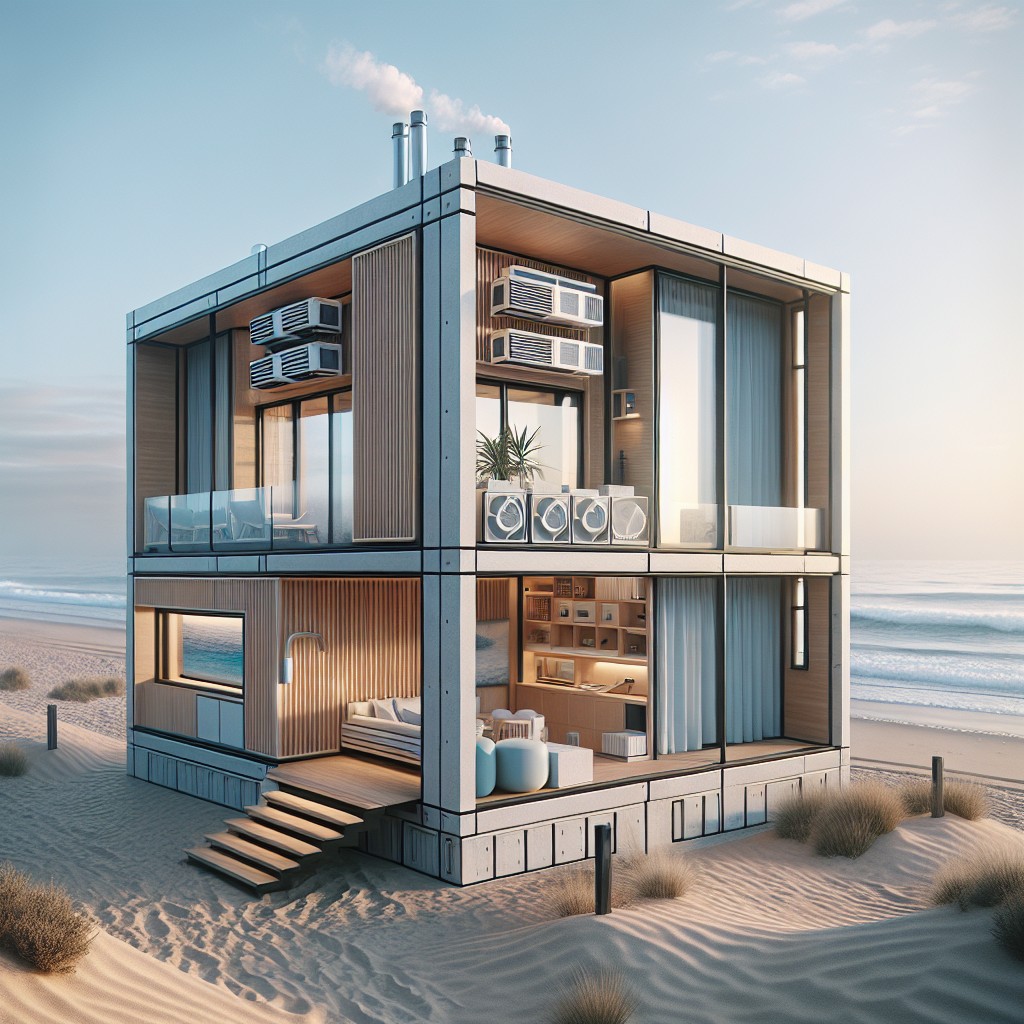
Harnessing sea breezes to manage indoor climate efficiently, coastal homes often incorporate large operable windows and doors strategically positioned to promote cross-ventilation. Louvered systems can be particularly effective, allowing homeowners to adjust airflow with precision.
Additionally, clerestory windows installed high on walls facilitate the removal of hot air as it rises, making space for cooler air at living level. Roof overhangs and shading devices play a crucial role too, offering protection from the harsh midday sun while still permitting the gentle morning and evening light to filter through, thus enhancing natural ventilation without overheating the interiors.
For optimal synergy with coastal elements, the layout of a home should follow an open-plan design that encourages air to flow freely through all rooms, creating a comfortable living environment without the constant need for mechanical cooling.
Low-Maintenance Landscaping for Coastal Environments
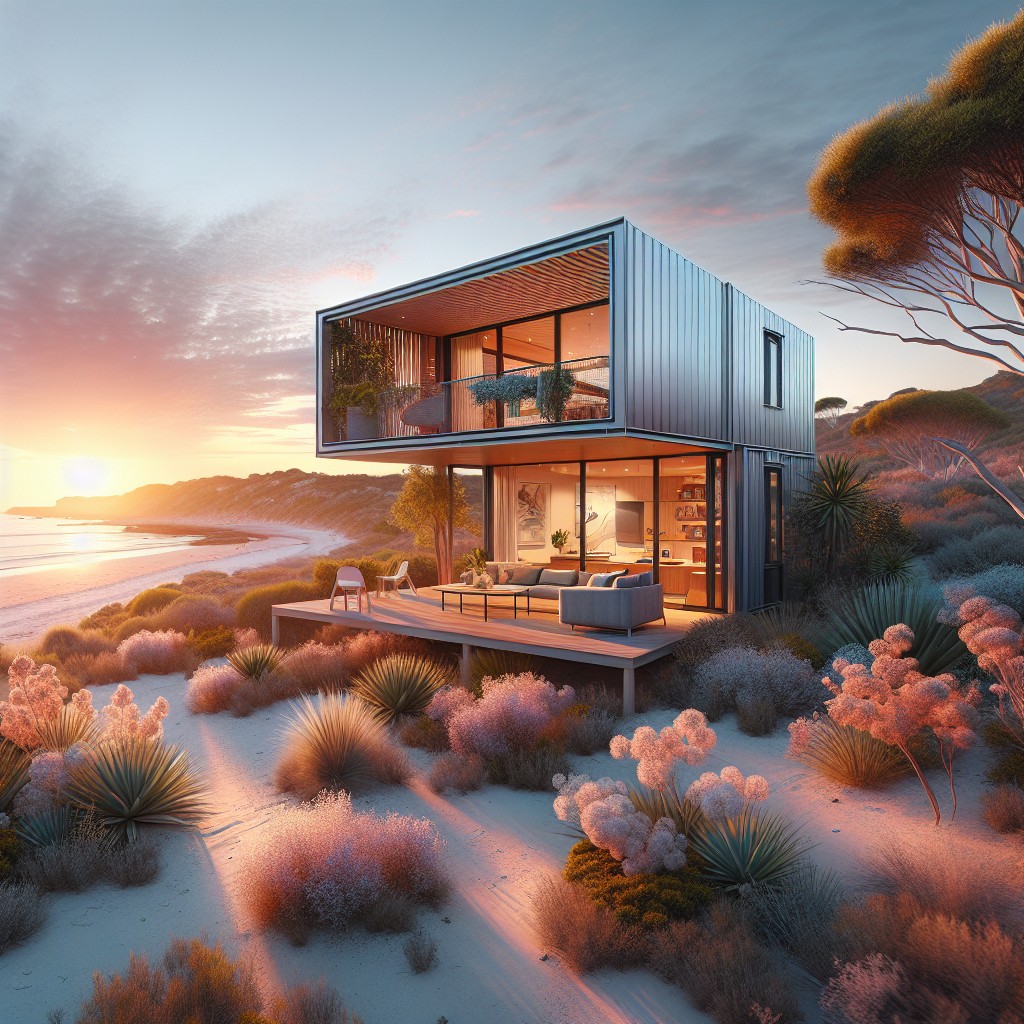
When selecting plants for a coastal landscape, prioritize native species that are well-adapted to salty, windy conditions and can thrive with minimal care. Opt for salt-tolerant grasses, shrubs, and perennials that reinforce soil and offer erosion control. Choose drought-resistant varieties that require less watering, reflecting both environmental considerations and convenience for the homeowner.
Incorporate ground covers to protect against soil loss while also adding visual interest. Utilize mulch made from local, organic materials to help retain soil moisture and reduce the need for chemical fertilizers. Consider creating a rain garden to manage runoff and protect water quality, utilizing plants that can tolerate both wet and dry conditions.
Design hardscapes with permeable materials to ensure proper drainage and reduce the likelihood of flood damage. When planning paths and driveways, use materials such as crushed shell, decomposed granite, or permeable pavers that complement the coastal environment and require minimal upkeep.
Intelligent planning of outdoor spaces should emphasize windbreaks using vegetation or structural elements to protect more sensitive plants and outdoor living areas. This strategic placement ensures that the landscaping serves both functional and aesthetic purposes, contributing to a sustainable, low-maintenance coastal home environment.
HiPerformance Coastal Construction Features
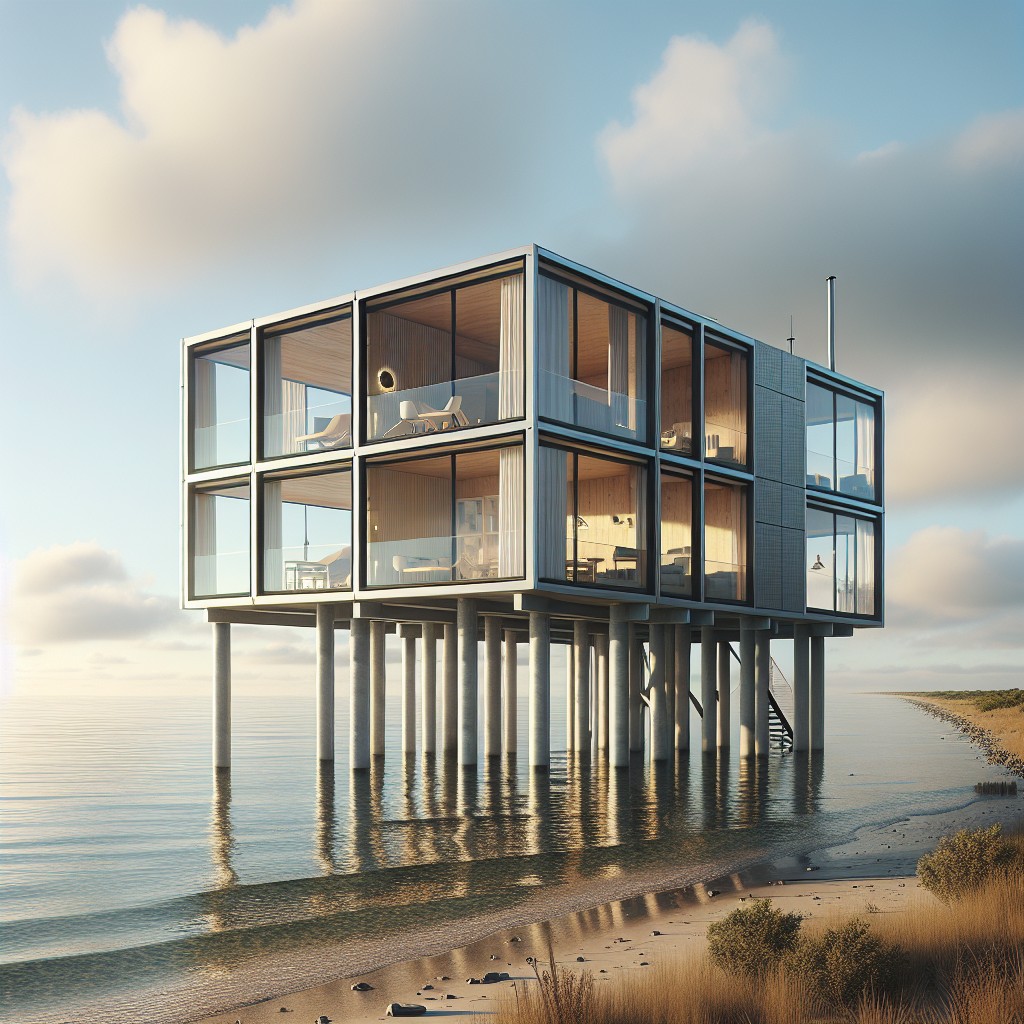
HiPerformance coastal construction goes beyond the standard building practices to ensure durability and energy efficiency in the face of unique coastal challenges. Here are the pivotal features:
- Elevated Foundations: Raising the home above typical flood levels protects against storm surges and encourages water flow beneath structures.
- Impact-Resistant Windows and Doors: These fixtures withstand high winds and flying debris, minimizing damage during extreme weather events.
- Moisture-Resistant Materials: Using products that withstand high humidity prevents mold growth and structural decay.
- Roofing with Wind Uplift Resistance: Quality roofing systems safeguard against the uplift effect of coastal winds, reducing the risk of roof damage.
- Advanced Insulation Techniques: Proper insulation acts as a barrier against heat and cold, optimizing internal temperature regardless of external conditions.
- Sealed and Insulated Ductwork: It prevents air loss, improves HVAC system efficiency, and combats corrosion from salty air.
By incorporating these elements, modular homes can offer safe, sustainable, and comfortable living spaces adapted to coastal environments.
House Plans for Coastal Living
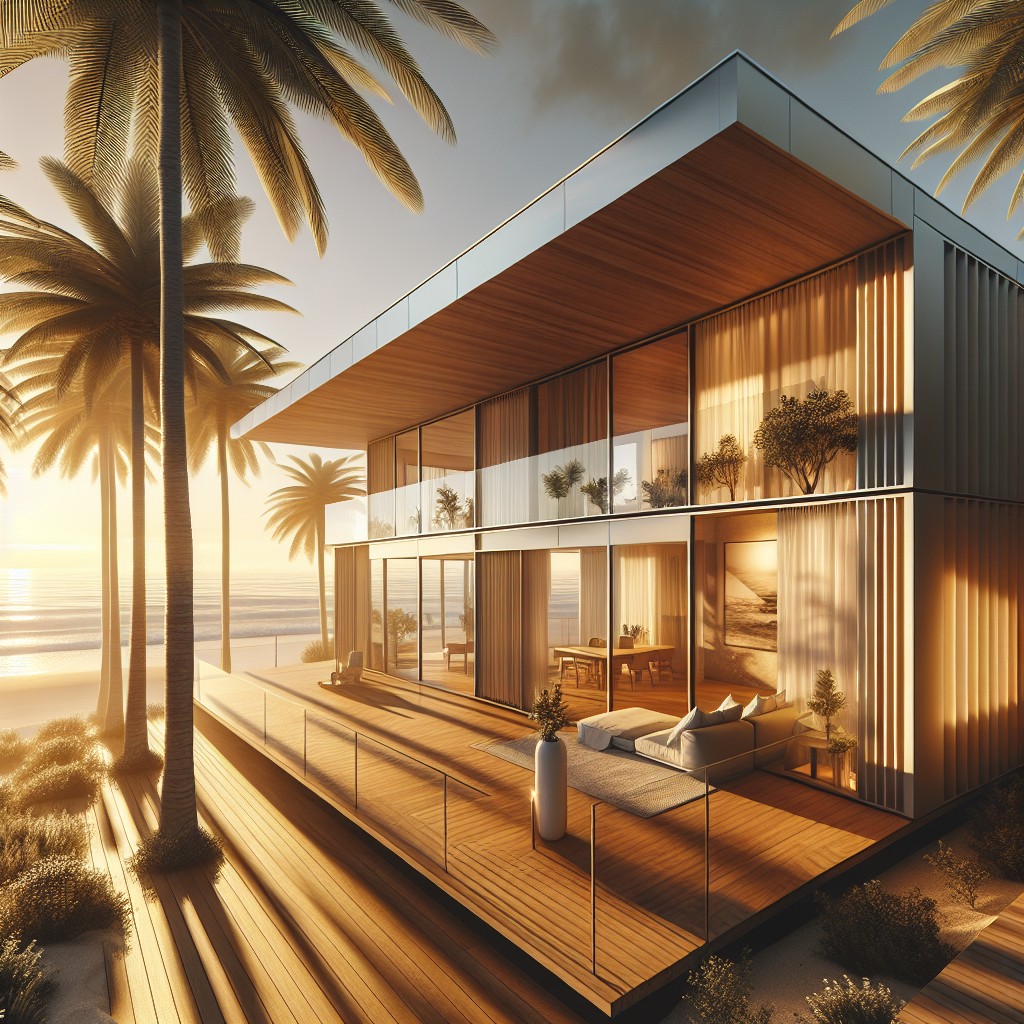
When selecting house plans suited for coastal living, emphasis is placed on durability, functionality, and harmony with the picturesque surroundings. Key elements include:
- Elevated foundations: To mitigate flood risk, homes are often raised on stilts or pilings.
- Open floor plans: These encourage natural airflow, essential for managing humidity and offering unobstructed views of the water.
- Ample outdoor living space: Decks, patios, and balconies maximize enjoyment of the coastal environment.
- Large windows and sliding doors: These features allow for ample natural light and seamless indoor/outdoor living.
- Materials selection: Plans often recommend materials that withstand corrosive salt air, such as treated wood, stainless steel, or composite products.
- Roofing considerations: Designs may suggest hip roofs with wide overhangs for better wind resistance and water runoff management.
Ultimately, the goal is to combine resilience with comfort, ensuring a home that not only stands up to coastal challenges but also celebrates the unique lifestyle that coastal settings offer.
Biophilic Design for Coastal Homes
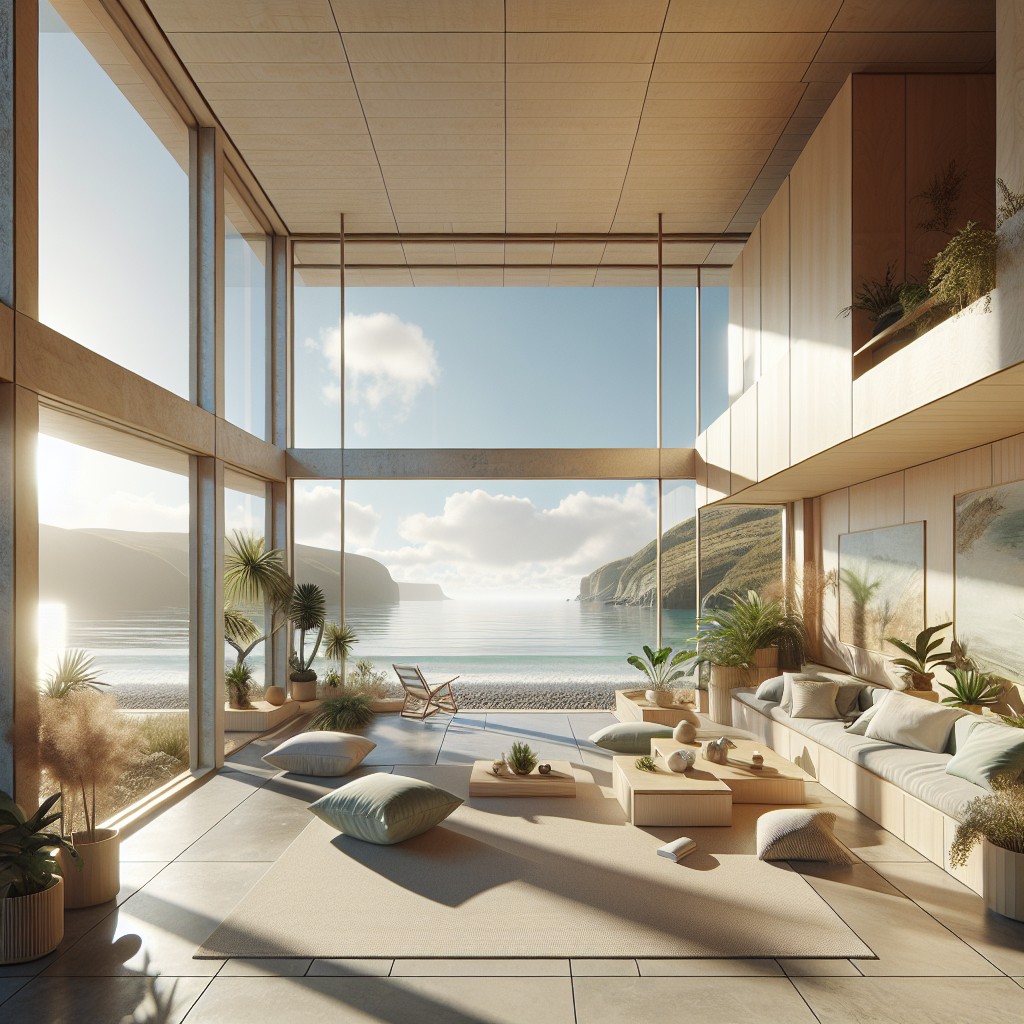
Biophilic design taps into our innate connection to nature by integrating natural elements directly into the architecture. In coastal homes, this can mean large windows that showcase sea views, indoor spaces with materials that mimic sand and driftwood, or living walls with salt-tolerant plants.
Skylights can bring in natural light, while stone or wood flooring helps ground the home in its natural setting. Outdoor living areas can be designed to encourage interaction with the coastal environment, with paths leading to the shore and outdoor showers for rinsing off after a swim.
To enhance residents’ well-being, circadian lighting systems mimic natural daylight cycles, complementing the rhythm of coastal life.
Ten Tips for Building On the Coast
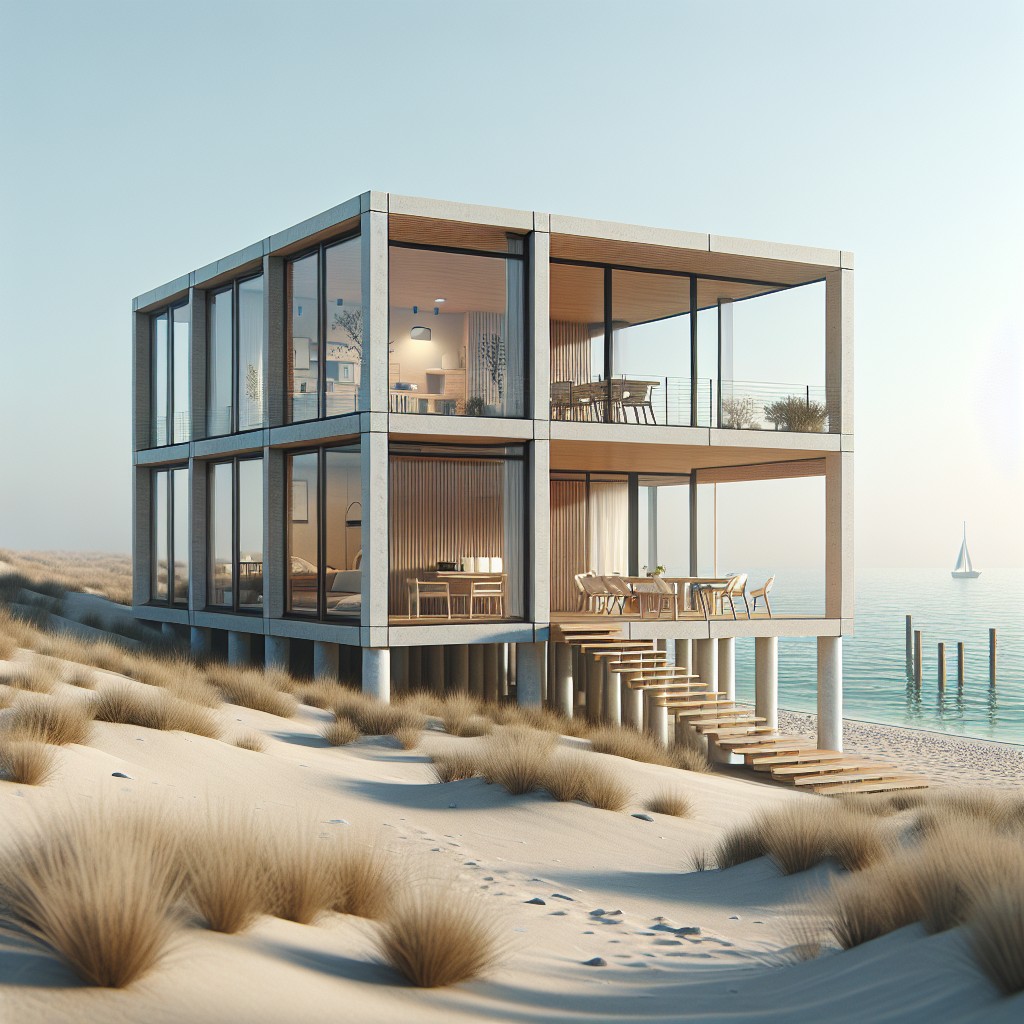
1. Elevate structures: Raise your home above the base flood elevation level to mitigate potential water damage from storm surges or high tide.
2. Opt for corrosion-resistant materials: Utilize stainless steel, galvanized steel, or specially treated wood to withstand the harsh coastal environment.
3. Implement wind-resistant design: Choose a design with a strong roof structure and reinforced windows to endure high wind conditions.
4. Prioritize energy efficiency: Integrate solar panels and energy-efficient appliances to reduce energy consumption and increase resilience during power outages.
5. Select native landscaping: Choose plants native to the coastal environment that are resilient to salt spray and can help control erosion.
6. Install proper drainage: Ensure that the land around your home is properly graded, and consider installing French drains or sump pumps to prevent flooding.
7. Use impact-resistant doors and windows: Protect against debris and pressure changes during storms with impact-rated openings.
8. Balance indoor-outdoor living: Design outdoor living spaces that can be easily secured and protected during extreme weather.
9. Plan for low maintenance: Select finishes and materials that are easy to clean, maintain, and resistant to mold and mildew, common in humid coastal climates.
10. Consult local experts: Work with architects and builders experienced in coastal construction to ensure your home adheres to regional codes and best practices.
Best Prefab and Modular Homes in 2024
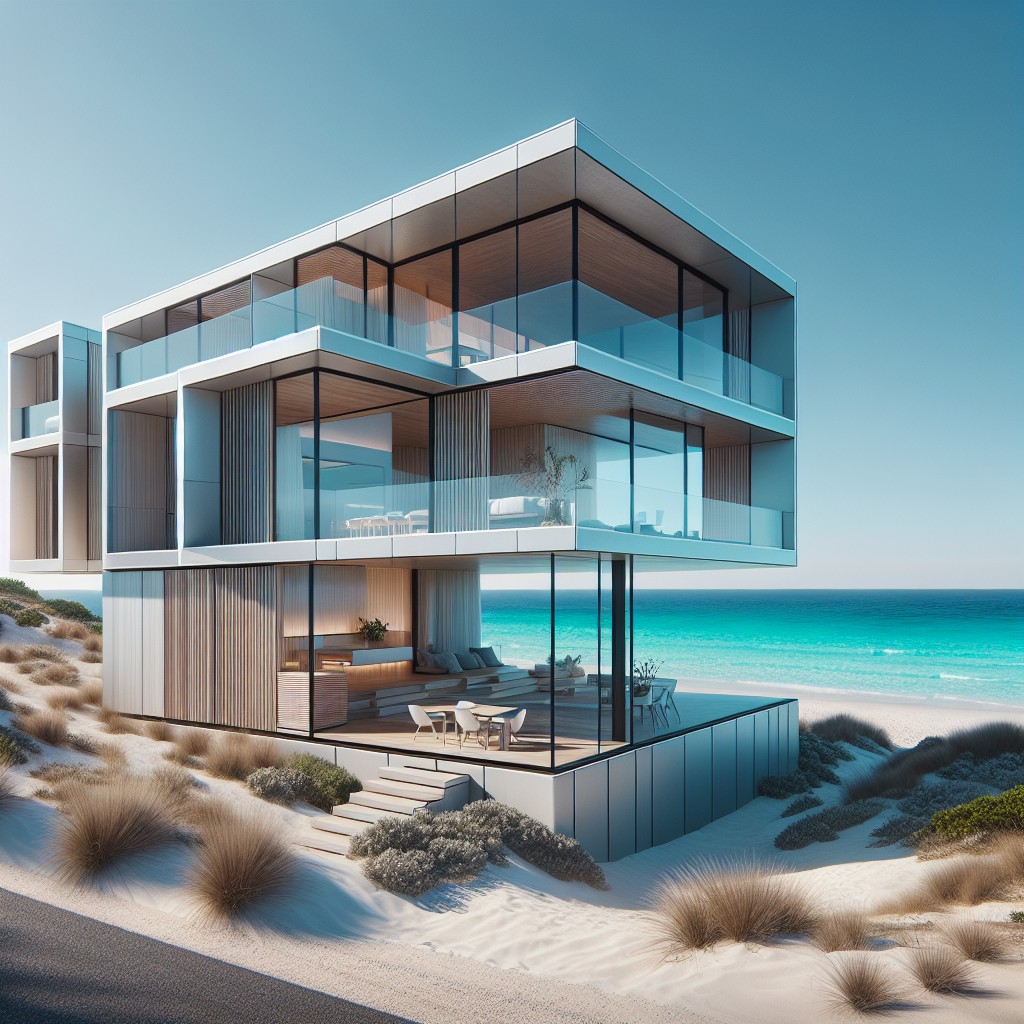
In 2024, the spotlight fell on several prefab and modular home manufacturers for their innovative and sustainable coastal designs. Blu Homes offered models with steel framing, able to withstand hurricane-force winds, and integrated smart technology for remote monitoring.
Deltec Homes’ circular designs provided inherent structural stability against extreme weather, combined with energy-efficient features like passive solar layouts. Method Homes collaborated with leading architects to present highly customizable coastal homes featuring durable materials and environmentally friendly options like green roofs.
MA Modular dazzled with their quick on-site assembly, minimizing environmental disruption while ensuring stylish, airy living spaces perfect for beachfront views. Finally, Plant Prefab stood out for its emphasis on sustainable building practices, including the use of non-toxic materials and resource-efficient production methods for healthier living spaces.
Each company demonstrated a commitment to blending functionality, aesthetics, and resilience, essential for thriving coastal lifestyles.
Table of Contents




